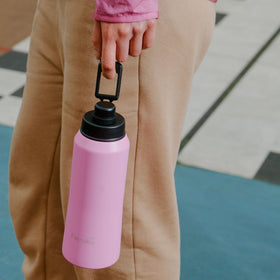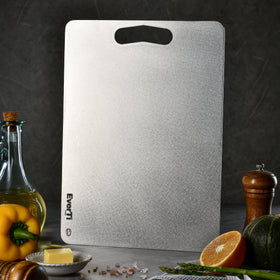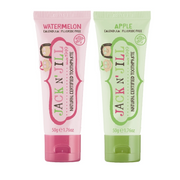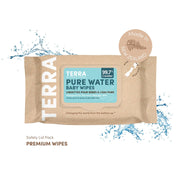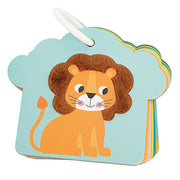We research and review every single product before we stock it, and there are lots of ingredients that we just will not stock. That's why you know that we really do stock the best non toxic skincare and babycare products.
But we're also about educating you so that you can make better choices for you and your family. So we thought we'd share a list of our 'no thanks!' ingredients so that you've got a guide for when you're shopping, and you, too can choose non toxic skincare.
This isn't a full list, as things are changing all the time, but it's a great starter list of toxic ingredients to avoid in skincare and personal care products.
1,4 Dioxane
What’s it used for: byproduct of ethoxylation
Although it’s easy to remove, many manufacturers don’t take this step
Found in: almost half of tested organic personal care products in 2008 (tested by US Organic Consumer Association).
Avoid any product with indications of ethoxylation, which include: "myreth," "oleth," "laureth," "ceteareth," any other "eth," "PEG," "polyethylene," "polyethylene glycol," "polyoxyethylene," or "oxynol," in ingredient names.
Health concerns: probable carcinogen; respiratory toxicant; skin, eye and lung irritant;possible kidney, liver, sense organ, cardiovascular, gastrointestinal toxin.
Aluminium Zirconium and other Aluminium Compounds
What’s it used for: Used to control sweat and odour in the underarms by slowing down the production of sweat.
Found in: Antiperspirants. Banned by EU.
Health concerns: Prevents sweating and clogs pored; linked to the development of Alzheimer’s disease; may be linked to breast cancer; probable neurotoxin; possible nervous system, respiratory, and developmental toxin.
Benzyl alcohol
What’s it used for: hidden within ‘fragrance’; used as a solvent
Found in: Lots of makeup, skincare and personal care products (read the labels).
Health concerns: irritant (for products around the lips); may increase the risk of contact allergies; possible organ system toxicity; not safe for babies
Benzalkonium chloride (BAK) and Benzethonium chloride
What’s it used for: Preservative, antimicrobial agent.
Found in: Moisturizer, sunscreen, facial cleanser, acne treatment, pain relief. Restricted in Japan and Canada.
Health concerns: Skin, eye and respiratory irritant and allergen; may trigger asthma; possible organ system toxicant; animal studies show endocrine disruption and brain, nervous system, respiratory and blood effects; possible carcinogen.
Bronopol (2-Bromo-2-Nitropropane-1,3-Diol)
What’s it used for: Preservative.
Found in: Moisturiser, body wash, facial cleanser, makeup remover, anti-aging products. Restricted in Canada.
Health concerns: Irritant; formaldehyde releaser; Immune system toxicant; lung and skin toxicant; animal studies show endocrine disruption and gastrointestinal, brain and nervous system effects; irritant.
Butyl Acetate
What’s it used for: Solvent in nail polishes and treatments, prevents chipping.
Found in: Nail polish and nail treatments.
Health concerns: Repeated exposure causes skin dryness and cracking; vapours may induce drowsiness or dizziness; flammable.
BHT (Butylated hydroxytoluene) & BHA (Butylated Hydroxyanisole)
What’s it used for: Preservatives and antioxidants
Found in: Many cosmetics and personal care products (read the labels).
Restricted use in the EU
Health Concerns: Both of these are considered to be endocrine disrupters; immune system toxicants; probable human carcinogen; animal studies show brain, liver, neurotoxin, reproductive and respiratory toxicant.
Carbon Black
What’s it used for: Colourant
Found in: Cosmetics (including eye makeup); nail polishes.
Banned in cosmetics by the FDA.
Health Concerns: Possible carcinogen; organ system toxicity
Coal Tar
What’s it used for: Controls itching and eczema; softens and helps the dissolution of hard, scaly, rough skin; also used in hair dyes.
Found in: Shampoo, soap and hair dye. Banned by Canada and EU.
Health concerns: Known human carcinogen; skin and respiratory toxicant.
Cocamide DEA/Lauramide DEA
What’s it used for: surfactants and foaming agents in shampoos and bath products; emulsifying agents in cosmetics.
Found in: Many cosmetics and personal care products (read the labels).
Health concerns: Human immune system toxicant; forms carcinogenic nitrosamine compounds if mixed with nitrosating agents; animal studies show sense organ effects and skin irritation; may contain harmful impurities (nitrosamines).
Cocamidopropyl Betaine
Avoid in leave on products, okay in rinse off products.
What’s it used for: Surfactant
Found in: bath products; skin cleansing products; hair care products and household cleaning products (read the labels)
Health Concerns: Some evidence of sensitisation toxicity and allergies; may contain harmful impurities (nitrosamines)
Diethanolamine (DEA)
What’s it used for: pH adjuster.
Found in: Sunscreen, moisturiser, foundation, hair colour.
Banned in the EU
Health concerns: Skin and immune system toxicant; possible carcinogen; irritant; animal studies show endocrine disruption and neuro developmental, brain and nervous system effects; may contain harmful impurities (nitrosamines); may trigger asthma.
DMDM hydantoin
What’s it used for: Preservative.
Found in: many cosmetics and personal care products (read the labels).
Health concerns: formaldehyde releaser; known human skin toxicant or allergen; possible carcinogen.
Ethoxylated Ingredients: Cetereath/PEG Compounds
What’s it used for: Surfactant, emulsifying or cleansing agent, penetration enhancer.
Found in: Many cosmetics and personal care products (read the labels).
Health concerns: Animal studies show brain, nervous system and sense organ effects; irritant; reproductive and skin toxin, alters skin structure, allowing other chemicals to penetrate deep into the skin and increasing the amounts of other chemicals that reach the bloodstream; may contain harmful impurities (ethylene oxide and 1,4 dioxane).
Diazolidinyl urea
What’s it used for: Preservative.
Found in: many cosmetics and personal care products (read the labels).
Health concerns: formaldehyde releaser; human skin toxicant or allergen.
Formaldehyde
What’s it used for: Disinfectant, germicide, fungicide, preservative.
Found in: Deodorant, nail polish, soap, shampoo, shaving cream. Restricted in Canada and the EU.
Health concerns: Immune system, respiratory, hematological, and skin toxicant; probable carcinogen and cardiovascular toxicant; can damage DNA; may trigger asthma; animal studies show sense organ, brain, and nervous system effects; possible human development toxicant.
Formaldehyde releasing preservatives (diazolidinyl urea, imidazolidinyl urea, DMDM hydantoin, quaternium-15, 2-bromo-2-nitropropane-1,3-diol, and sodium hydroxylmethylglycinate)
What’s it used for: Preservative.
Found in: Many cosmetics and personal care products (read the labels).
Health concerns: Forms nitrosamines when in the presence of amines like MEA, DEA and TEA; probable immune system, blood, cardiovascular and skin toxicant; possible carcinogen; animal studies show endocrine disruption, nervous system and organ system effects; may contain harmful impurities.
Fragrance or perfume
What’s it used for: perfuming, masking, deodorant
Found in: many cosmetics, personal care products and household products (read the labels)
Health concerns: unknown ingredients; may contain phthalates; human immune system toxicant or allergen; possible respiratory toxicant.
Hydroquinone
What’s it used for: Antioxidant, fragrance ingredient, skin bleaching agent, hair dyeing.
Found in: Skin lighteners, hair dyes, sunscreen, skincare products. Restricted in Canada and the EU.
Health concerns: Immune system, skin and respiratory toxicant; possible carcinogen.
Imidazolidinyl Urea
What’s it used for: Preservative.
Found in: many cosmetics and personal care products (read the labels).
Health concerns: formaldehyde releaser; human skin toxicant or allergen.
Iodopropynyl Butylcarbamate (3-Iodo-2-Propynyl Butyl Carbamate)
What’s it used for: Preservative.
Found in: Many cosmetics and personal care products (read the labels). Restricted in Japan.
Health concerns: Human toxicant; possible liver immune system toxin; allergenic.
Laureth-4
What’s it used for: Surfactant
Found in: many skincare products, sunscreen, deodorant (read the labels)
Health concerns: skin and eye irritant; contamination concerns (ethylene oxide and 1,4 dioxane)
Lead and Lead Compounds
What’s it used for: Colourant.
Found in: Hair dye, hair products. Traces found in some red lipstick. Banned in Canada.
Health concerns: Probable carcinogen; developmental, respiratory, gastrointestinal and reproductive toxicant; reduced fertility; animal studies show metabolic, brain and nervous system effects; suspected nano-scale ingredients with potential to absorb into the skin.
Methylisothiazolinone (MIT) and Methylchloroisothiazolinone (MCI)
What’s it used for: Preservative.
Found in: Many cosmetics and personal care products (read the labels). Restricted in the Eu, Canada and Japan.
Health concerns: Immune system toxicant; skin toxicant or allergen; possible neurotoxin.
Oxybenzone (Benzophone-3)
What’s it used for: Sunscreen Agent; Ultraviolet Light Absorber, UV Absorber; UV Filter.
Found in: Sunscreens and makeup
Health concerns: Associated with photoallergic reactions and immunotoxicity; probable carcinogen and endocrine disrupter; enhanced skin absorption and bioaccumulates to dangerous levels; biochemical cellular changes; developmental and reproductive toxicity. Also blamed for harm to coral reefs.
Parabens
What’s it used for: Preservative.
Found in: Many cosmetics and personal care products (read the labels)
Health concerns: May alter hormone levels, possibly increasing risk for certain types of cancer, impaired fertility, or alteration of the development of a fetus or young child; studies have found parabens in breast tumours; probable skin toxicant; animal studies show brain and nervous system effects.
Petrolatum (Petroleum)
What’s it used for: Forms barrier on skin; adds shine and makes creams smoother; inexpensive skin softener.
Found in: Many cosmetics and personal care products, (read the labels)
Health concerns: May be contaminated with impurities, linked to cancer or other significant health problems.
Phenoxyethanol
What’s it used for: Preservative.
Found in: Many cosmetic and personal care products; cleaning products (read the labels) Restricted in Japan
Health concerns: Possible skin and immune system toxicities; skin, eye and lung irritant; can depress the central nervous system in infants.
Phthalates
What’s it used for: Fragrance ingredient, plasticiser, solvent.
Found in: Many cosmetics and personal care products, (read the labels). Banned in EU.
Health concerns: Immune system toxicant; developmental and reproductive toxin; respiratory toxicant; probable neurotoxin; possible carcinogen and endocrine disruptor; bio-accumulative in wildlife.
P-Phenylenediamine (PPD)
What’s it used for: Hair colorant.
Found in: Hair dye, shampoo, hair spray. Restricted in Canada.
Health concerns: Immune system and respiratory toxicant; probable neurotoxin; eczema; possible nervous system, skin, kidney and liver toxicant; irritant; may trigger asthma and gastritis; shown to cause cancer in animal studies.
Propylene Glycol
What’s it used for: Solvent, fragrance ingredient, penetration enhancer, conditions skin, controls viscosity and keeps products from melting in high heat or freezing when it is cold.
Found in: Many cosmetics and personal care products, food and drug products, (read the labels).
Health concerns: Skin, eye and lung irritant; alters skin structure, allowing other chemicals to penetrate deep into the skin and increasing the amounts of other chemicals that reach the bloodstream.
PEG’s (polyethylene glycols) – See Ethoxylated Compounds
What’s it used for: Surfactant, emulsifying or cleansing agent, penetration enhancer.
Found in: Many cosmetics and personal care products (read the labels).
Health concerns: Animal studies show brain, nervous system and sense organ effects; irritant; reproductive and skin toxin, alters skin structure, allowing other chemicals to penetrate deep into the skin and increasing the amounts of other chemicals that reach the bloodstream; may contain harmful impurities (ethylene oxide and 1,4 dioxane).
Retinyl Acetate and Retinyl Palmitate
What’s it used for: skin conditioning
Found in: hair, makeup, skincare products (read the labels)
Banned in Germany; restricted in Canada
Health concerns: Human reproductive toxicant; causes biochemical or cellular level changes; enhanced skin absorption.
Sodium Hydroxymethylglycinate
What’s it used for: Preservative
Found in: hair and skincare products (read the labels)
Health concerns: human toxicant or allergen; formaldehyde releaser
Sodium Lauryl Sulphate
What’s it used for: Surfactant; foaming agent
Found in: many products like shampoos, bath products, toothpaste, shaving preparations, cleaning products (read the labels)
Health concerns: skin, eye and lung irritant
Sodium Laureth Sulphate
What’s it used for: Surfactant; foaming agent; penetration enhancer
Found in: many products like shampoos, bath products, toothpaste, shaving preparations, cleaning products (read the labels)
Health concerns: skin, eye and lung irritant; alters skin structure, allowing other chemicals to penetrate more deeply into skin; contamination concerns (ethylene oxide and 1,4 dioxane)
Synthetic Colours (FD&C and D&C)
What’s it used for: colouring
Found in: many products (read the labels)
Health concerns: some FD&C colours can be derived from coal tar, but some studies suggest they are carcinogenic; potential irritants and allergens
Talc
What’s it used for: absorbent; anticaking agent
Found in: makeup, baby powder, body powder, deodorising powders
Restricted in Canada and the EU
Health concerns: some evidence of respiratory toxicity; links between talcum powder and ovarian cancer; contamination concerns (asbestos fibres)
Triethanalomine (TEA)
What’s it used for: surfactant; pH adjuster
Found in: many products, including makeup, skincare, sunscreen, haircare (read the labels)
Restricted in EU
Health concerns: skin, immune system and respiratory toxicant and allergen; contamination concerns (nitrosamines)
Toluene
What’s it used for: antioxidant; solvent to help improve adhesion
Found in: nail polish
Restricted in EU, Unsafe for Use in Cosmetics (International Fragrance Association)
Health concerns: Liver toxin; probable developmental, nervous system and respiratory toxin; possible cardiovascular, musculoskeletal, renal and sense organ toxin; possible reproductive toxin; irritant.
Triclosan
What’s it used for: antibacterial agent, preservative
Found in: many personal care products, cleaning and home products (read the labels)
Restricted in Canada and Japan
Health concerns: possible endocrine disrupter and organ system toxicant (non reproductive); skin irritant; persistence and bioaccumulation in the environment.





